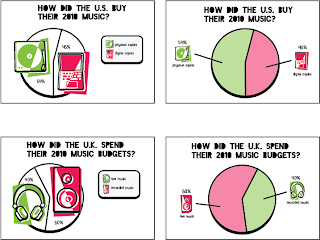so! i haven't talked about this yet. my bad, blogosphere. here's the story so far.
over spring break we read a set of short stories by either faulkner, o'connor, or poe. i chose o'connor, as she was the only one i hadn't read previously. the project is to make a related set of 3 e-book covers, one for each story, the sort that you might buy from itunes(?) or wherever it is that fine e-books are sold. this means that our covers will remain in a digital format and operate from thumbnail up to screen-sized.
we started by coming up with 5 different directions, each with a cover for each story. in case you can't read my inarticulate handwriting, or for the occasions i didn't write my explanation, they are as follows:
"the innocent identifiables of the bad guys." i've got a couple of ideas here (almost all of them, actually) that deal with the naïveté of the main characters by misrepresenting the bad guys as harmless or even good/helpful.

this idea deals with choosing animals to work as symbols for the main antagonists.
"a misleading image from RIGHT BEFORE the betrayals." this would take something that looks nice, romantic, sweet pleasant good etc, that once you've read the story you would understand to be dramatically ironic.
"the moment they first see the traitor," from the point of view of the characters. another mislead/dramatic irony solution.
this one has more to do with my reading of what the project was about, compositing and manipulating imagery... i thought of combining the faces of all the different characters of each story into one bizarre multi-face. not the strongest idea.
so, from there, it was revealed to me through critique that the ideas people found most interesting were the animals as symbols, and maybe the innocent objects, if i could combine the two? (i could.) i also thought harder about my animal symbols, choosing the fox for the trickery of the bible salesman in
good country people, a snake for the psychopathic tendencies of the misfit in
a good man is hard to find and a vulture to represent the scavenging/leeching of the handyman for
the life you save may be your own.
the other option my classmates found most interesting was the "moment before" idea, with the twist that maybe it came from the point of view of the bad guy. i was a little less excited about these.
the next step was a stage one digital trial. instead of 3 related covers, i decided to use each cover as a way to explore a different rendering method for my animals/objects idea. the type is digital in all three, but for the image, i tried all analog (watercolor), analog/digital combo (watercolor+vector) and all digital (vector). it shouldn't be too hard to discern which is which.
in a turn that honestly surprised me a little (but not too much), everybody preferred the pure analog approach to imagery.
what this means is that in my next super awesome blog post on this topic, you'll see at least two new watercolored animal/stuff pictures!





































